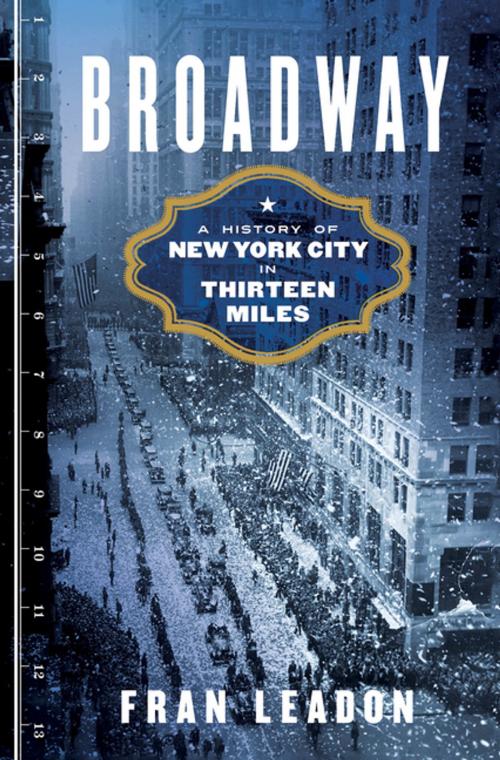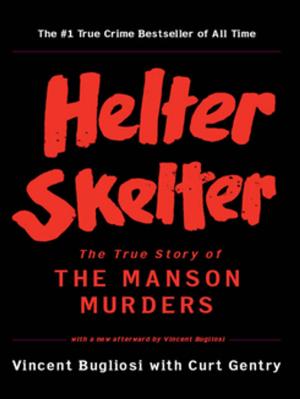Broadway: A History of New York City in Thirteen Miles
Nonfiction, Art & Architecture, Architecture, Planning, History, Americas, United States| Author: | Fran Leadon | ISBN: | 9780393285451 |
| Publisher: | W. W. Norton & Company | Publication: | April 17, 2018 |
| Imprint: | W. W. Norton & Company | Language: | English |
| Author: | Fran Leadon |
| ISBN: | 9780393285451 |
| Publisher: | W. W. Norton & Company |
| Publication: | April 17, 2018 |
| Imprint: | W. W. Norton & Company |
| Language: | English |
An eye-opening history of Manhattan told through its most celebrated street.
In the early seventeenth century, in a backwater Dutch colony, there was a wide, muddy cow path that the settlers called the Brede Wegh. As the street grew longer, houses and taverns began to spring up alongside it. What was once New Amsterdam became New York, and farmlands gradually gave way to department stores, theaters, hotels, and, finally, the perpetual traffic of the twentieth century’s Great White Way. From Bowling Green all the way up to Marble Hill, Broadway takes us on a mile-by-mile journey up America’s most vibrant and complex thoroughfare, through the history at the heart of Manhattan.
Today, Broadway almost feels inevitable, but over the past four hundred years there have been thousands who have tried to draw and erase its path. Following their footsteps, we learn why one side of the street was once considered more fashionable than the other; witness the construction of Trinity Church, the Flatiron Building, and the Ansonia Hotel; the burning of P. T. Barnum’s American Museum; and discover that Columbia University was built on the site of an insane asylum. Along the way we meet Alexander Hamilton, Emma Goldman, Edgar Allan Poe, John James Audubon, "Bill the Butcher" Poole, and the assorted real-estate speculators, impresarios, and politicians who helped turn Broadway into New York’s commercial and cultural spine.
Broadway traces the physical and social transformation of an avenue that has been both the "Path of Progress" and a "street of broken dreams," home to both parades and riots, startling wealth and appalling destitution. Glamorous, complex, and sometimes troubling, the evolution of an oft-flooded dead end to a canyon of steel and glass is the story of American progress.
An eye-opening history of Manhattan told through its most celebrated street.
In the early seventeenth century, in a backwater Dutch colony, there was a wide, muddy cow path that the settlers called the Brede Wegh. As the street grew longer, houses and taverns began to spring up alongside it. What was once New Amsterdam became New York, and farmlands gradually gave way to department stores, theaters, hotels, and, finally, the perpetual traffic of the twentieth century’s Great White Way. From Bowling Green all the way up to Marble Hill, Broadway takes us on a mile-by-mile journey up America’s most vibrant and complex thoroughfare, through the history at the heart of Manhattan.
Today, Broadway almost feels inevitable, but over the past four hundred years there have been thousands who have tried to draw and erase its path. Following their footsteps, we learn why one side of the street was once considered more fashionable than the other; witness the construction of Trinity Church, the Flatiron Building, and the Ansonia Hotel; the burning of P. T. Barnum’s American Museum; and discover that Columbia University was built on the site of an insane asylum. Along the way we meet Alexander Hamilton, Emma Goldman, Edgar Allan Poe, John James Audubon, "Bill the Butcher" Poole, and the assorted real-estate speculators, impresarios, and politicians who helped turn Broadway into New York’s commercial and cultural spine.
Broadway traces the physical and social transformation of an avenue that has been both the "Path of Progress" and a "street of broken dreams," home to both parades and riots, startling wealth and appalling destitution. Glamorous, complex, and sometimes troubling, the evolution of an oft-flooded dead end to a canyon of steel and glass is the story of American progress.















